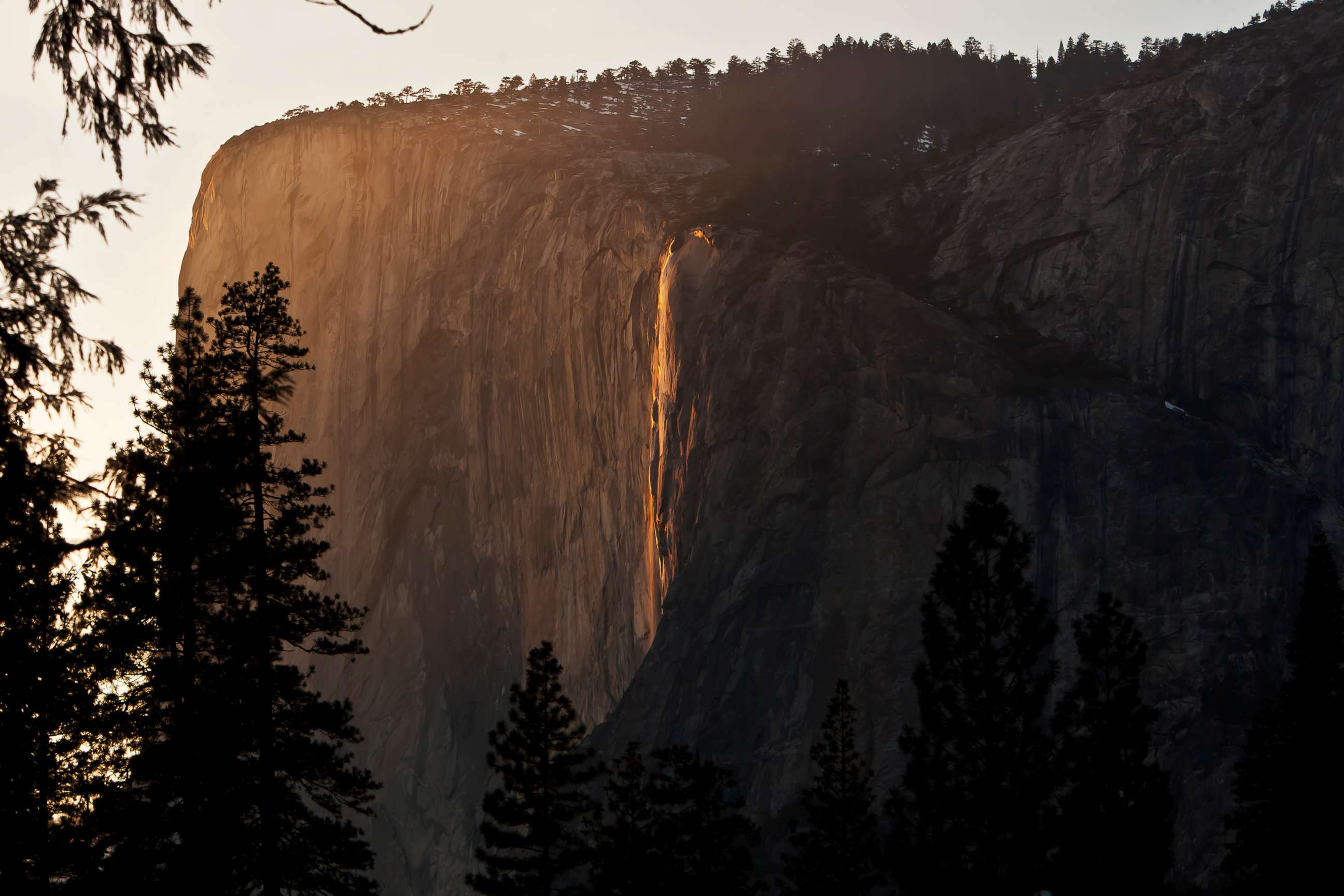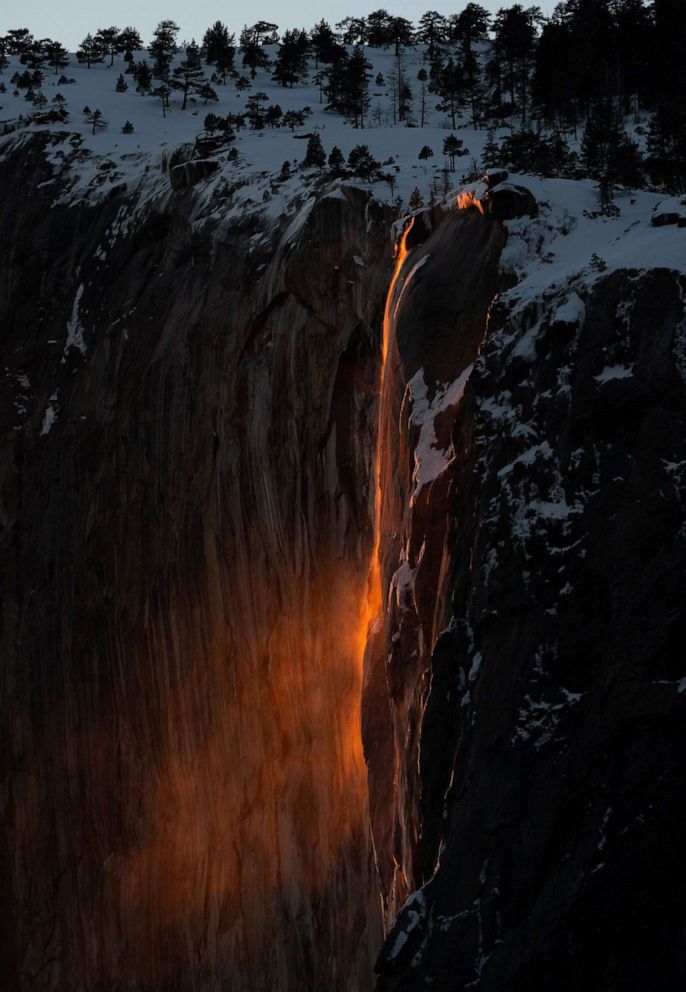Yosemite's mesmerizing 'firefall' may be trickier to see this year
The waterfall where it normally happens has seen "little to no water."
Revelers trying to catch Yosemite's captivating "firefall" phenomenon may be out of luck this year.
"Firefall" traditionally occurs when water from the Horsetail Fall waterfall, on the eastern edge of El Capitan in Yosemite Valley, is lit up by the sunset and glows orange.

But this year, Horsetail Fall has seen "little to no water," according to the National Parks Service.

Even with an abundance of water, "firefall" can be easy to miss because it only happens on nights with clear skies, the park agency said. Any sort of cloud or haze hinders the glow.
"Firefall" usually occurs in mid- to late-February. Due to its popularity, the park is implementing traffic and parking restrictions Feb. 13 to 27, from noon to 7 p.m.
No permit is required to view Horsetail Fall.




